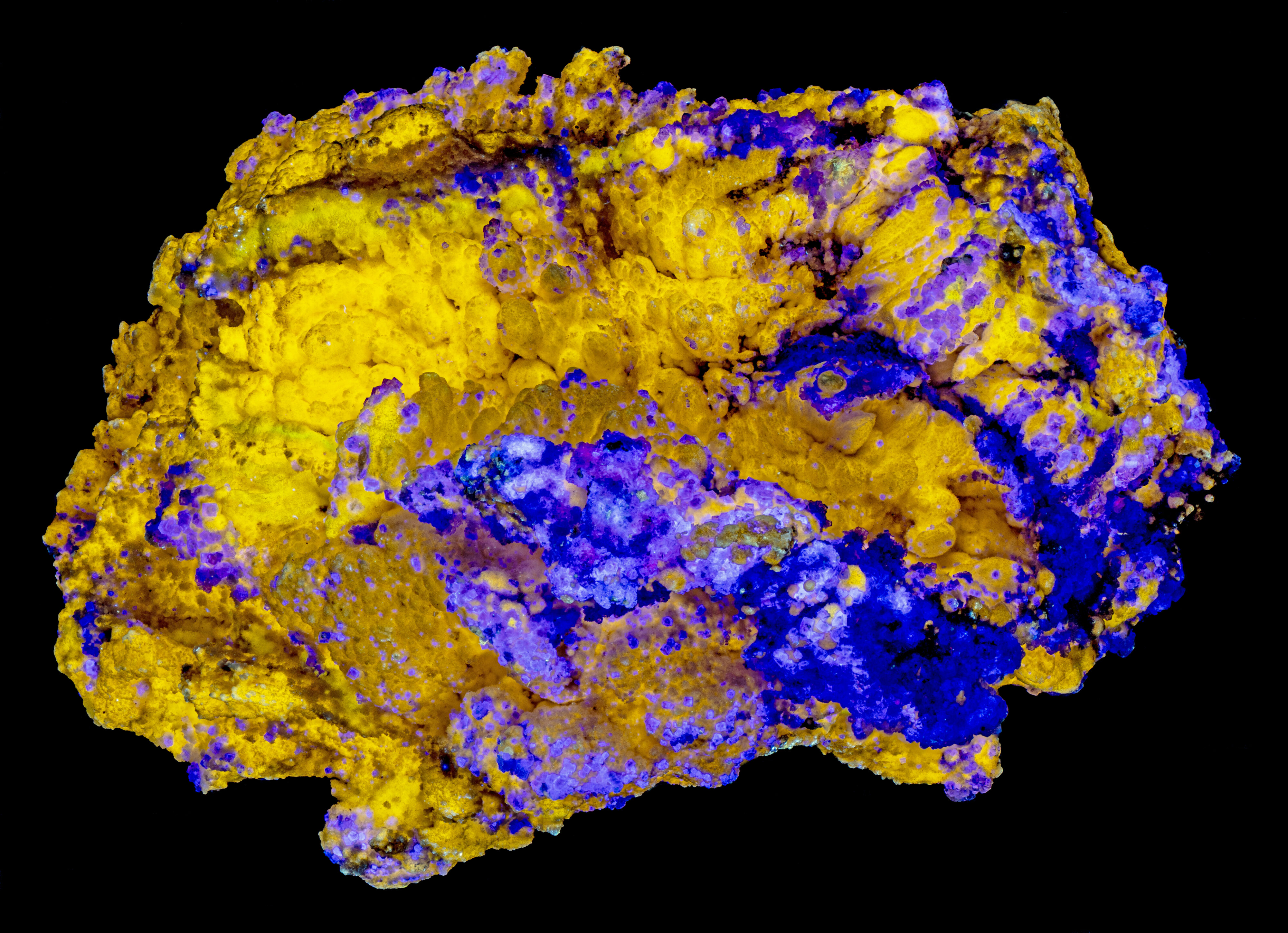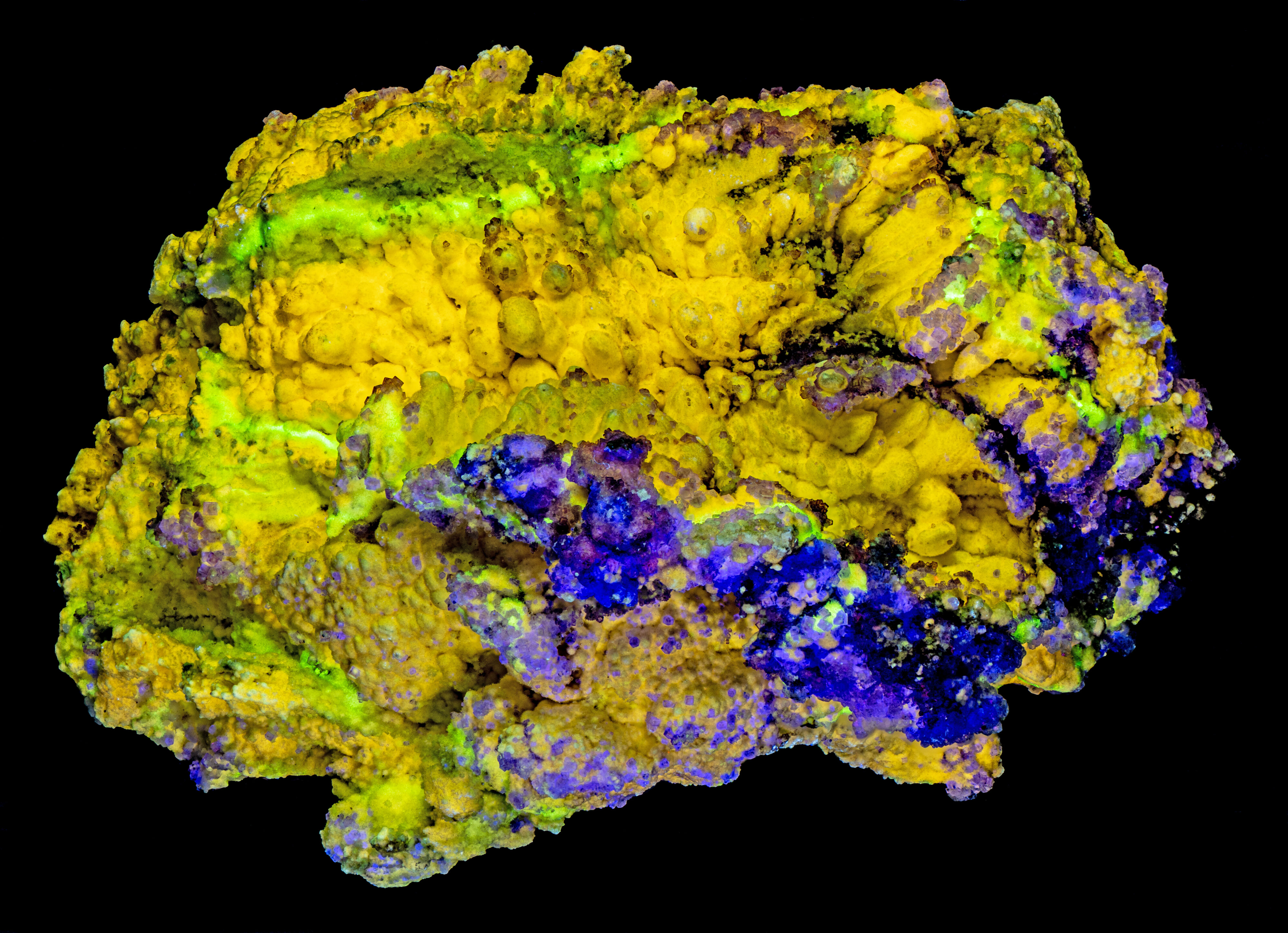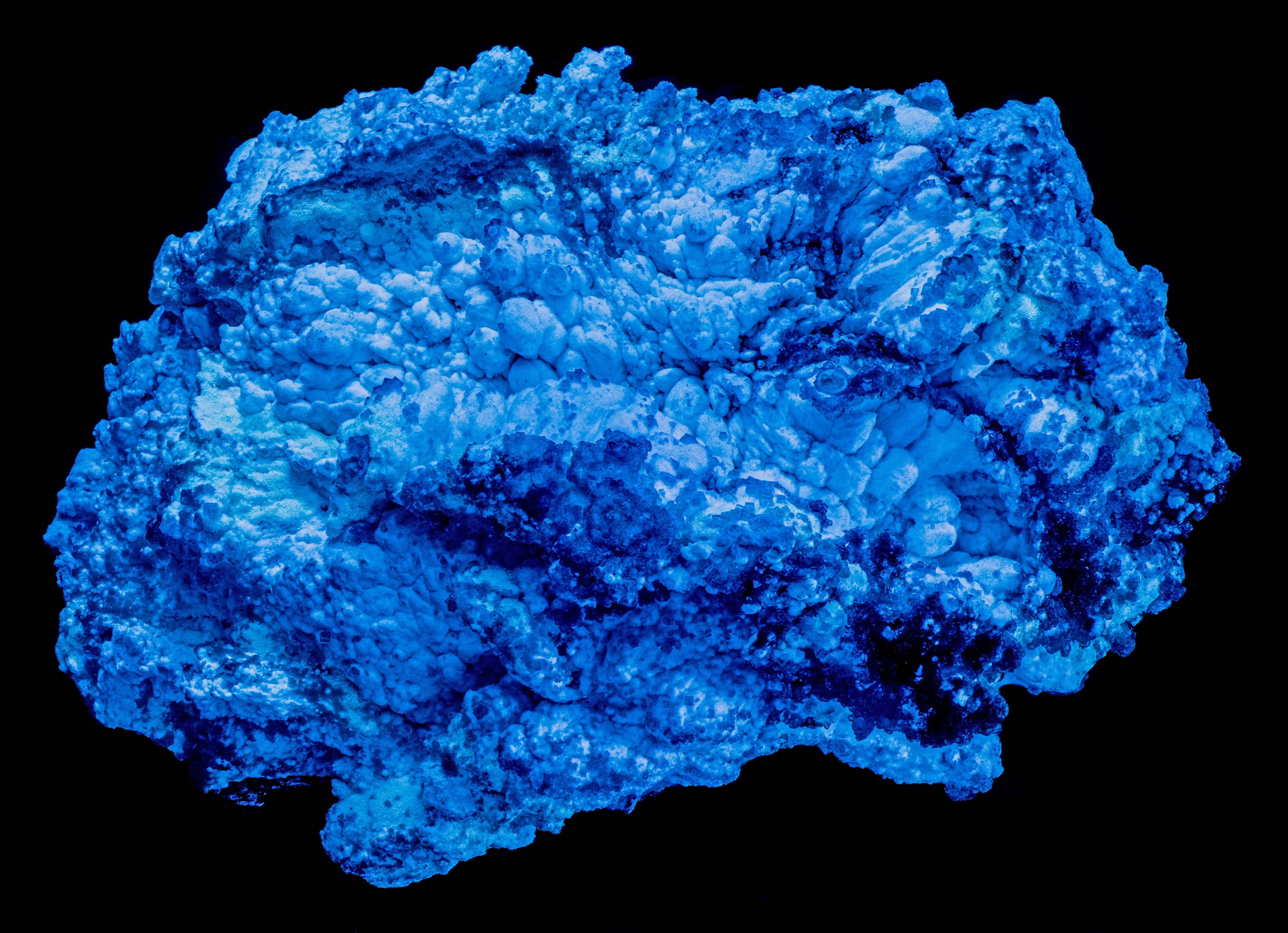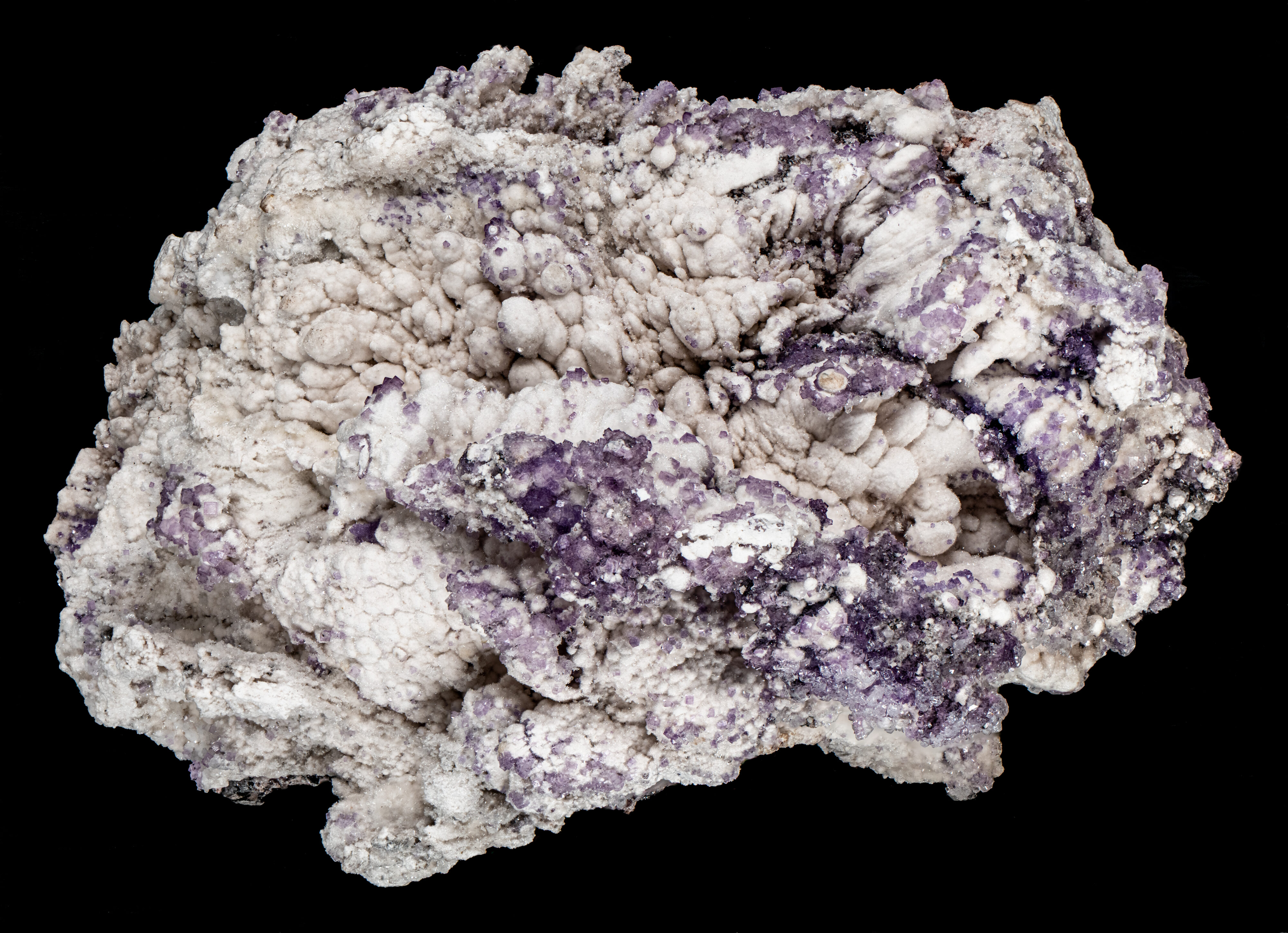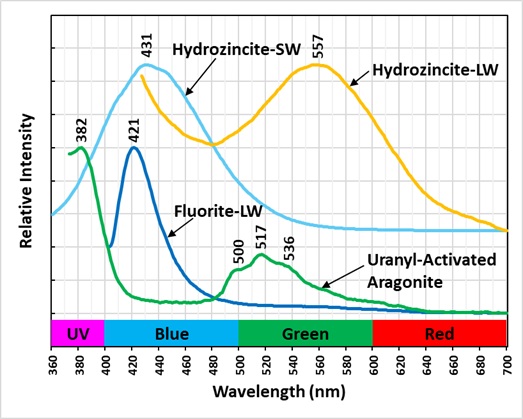Hydrozincite and Fluorite from Santa Eulalia, Chihuahua, Mexico
Contributed by: Michael Crawford
Date: Oct 24th, 2025
Locality: Santa Eulalia Mining District, Aquiles Serdán Municipality, Chihuahua, Mexico (See on Mindat)
Size: 10 x 15 cm
Description:
This is some new material recently recovered (2025) from the Santa Eulalia area, Chihuahua, Mexico. The specimen contains purple fluorite (CaF2) and hydrozincite (Zn5(CO3)2(OH)6). Hydrozincite is a secondary mineral formed from the alteration of other zinc bearing minerals such as sphalerite, hemimorphite, or smithsonite. It appears that the fluorite crystallized on the hydrozincite.
The fluorite fluoresces violet blue under longwave and midwave UV light. Its emission spectrum peaks at 421 nm and is typical for europium (Eu2+) activated fluorescence in fluorite.
The hydrozincite fluoresces bright yellow under longwave and dimmer yellow under midwave light. The color of the hydrozincite fluorescence changes to bright light blue under shortwave light. The shortwave emission spectrum of blue, fluorescent hydrozincite is a broad peak with a maximum at 431 nm. This fluorescence is activated by lead (Pb2+) replacing zinc. The longwave peak emission peak is at 557 nm for the yellow fluorescence of hydrozincite. The cause of this yellow fluorescence is unknown.
Under midwave light there is a green, fluorescent mineral that may be uranyl activated aragonite. The uranyl activation is shown in the emission spectrum with three sharp peaks at 500 nm, 517 nm, and 536 nm. There is another very bright peak in the ultraviolet at 382 nm. The activator of this ultraviolet peak is unknown. It might be lead.
Summary of luminescence responses:
Hydrozincite (Mindat) (RRUFF)
- Fluorescence under Longwave (365nm LED) UV light: Yellow
- Fluorescence under Midwave (305nm LED) UV light: Yellow
- Fluorescence under Shortwave (255nm LED) UV light: Blue
- Fluorescence under Longwave (365nm LED) UV light: Blue
- Fluorescence under Midwave (305nm LED) UV light: Blue

